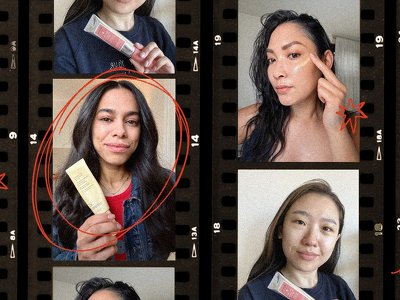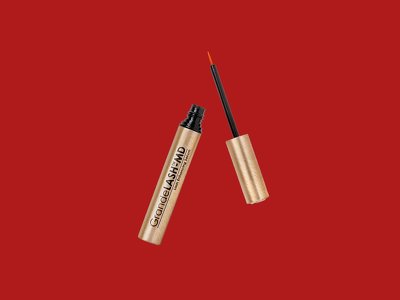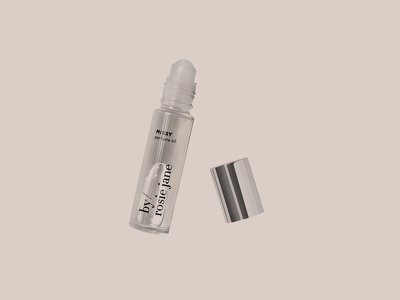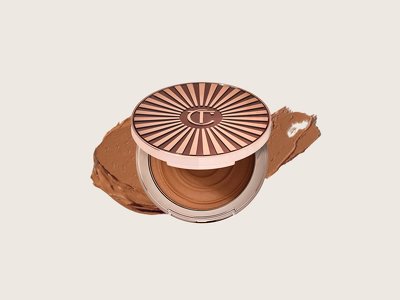For Black Patients With Hair Loss, Two New Treatments Show Promise

As a Black woman I’ve spent much of my life trying to find the balance between styling my hair and preserving it. Growing up I heard about and saw images of Black women whose hair had fallen out permanently after years of chemical damage, or their edges never recovered from wearing that one style that was simply too tight. We’re bombarded with too many horror stories of irreversible hair loss and too few success stories of hair recovery. It can feel like one of our most important jobs, specifically as a Black woman, is avoiding hair loss at all costs.
“Hair loss has been plaguing every race of women and men since the beginning of time,” says board-certified dermatologist Oyetewa Asempa, MD. But for Black women, the condition of our hair holds extra weight: Hair loss, whether in the form of breakage, shedding, or thinning edges, can often feel like a consequence you’ve earned by “doing too much” to your hair.
Hair loss is a universal condition, but there are some types that seem to affect Black women at higher rates than other demographics. The most well-known is probably central centrifugal cicatricial alopecia (CCCA), which was first identified in 1968 and is now one of the leading forms of hair loss among Black women.
“CCCA is one of the more common types of hair loss that we see. I treat it all day, every day,” says Meena Singh, MD, a board-certified dermatologist and dermatologic surgeon based in Mission, Kansas. “This is a type of hair loss that happens predominantly in women of African descent, and it is now, basically, an epidemic.”
Despite the condition being so common among Black women—with the frequency up to 5.6%, according to one study of Black women in the US—Crystal Aguh, MD, board-certified dermatologist, associate professor of dermatology, and director of the Ethnic Skin Program at the Johns Hopkins School of Medicine, believes research stalled on CCCA for decades because “people were so caught up in blaming patients for their own misfortune and saying, ‘You must have done something to your hair.’”
CCCA was originally believed to be caused by hair-care practices—the first study describing the condition called it “hot-comb alopecia.” But new research has discovered that genetics also play a role.
Black women, and the conditions that disproportionately affect them, have long been underrepresented in medical research. This, compounded by other factors—such as a Massachusetts Institute of Technology study that shows some dermatologists have trouble identifying conditions when it comes to Black skin—can have implications for hair loss treatment options available to Black women.
But the tide seems to be slowly turning, thanks in part to a combination of improved technologies and other developments, including initiatives like Pathways, a collaboration of the American Association of Dermatology (AAD), American Academy of Dermatology Association (AADA), Johnson & Johnson, and Kenvue, which support increased diversity and inclusivity in the dermatologic specialty.
In fact, two of the newest potential treatments for hair loss—both of which have been more widely discussed within the past five years—seem to benefit patients with CCCA, a condition that, again, affects Black patients at a higher rate. Neither of these two treatments has yet been approved by the FDA for hair loss, but a number of dermatologists seem excited by the possibilities. Here, some of those doctors share why these remedies seem so promising.
Metformin, a drug that has FDA approval to treat high blood sugar in people with type 2 diabetes, has emerged as a potential treatment option for CCCA. Dr. Aguh started formally exploring the drug's ability to treat hair loss after she observed that many of her Black women patients who exhibited scarring alopecia were also more likely to have other types of scarring, like keloids or fibroids.
“One of the first things I noticed was that these Black women who were coming in [to my practice] with this scarring hair loss were also more likely to just have scars in general, whether that was keloids or fibroids,” says Dr. Aguh. “So I did a study to see if the gene-expression pattern of CCCA was similar to some of these other scarring disorders.”
Through that research Dr. Aguh was able to identify that Metformin had also been used to treat other instances of abnormal scarring. As part of her research on hair loss, she then had the drug reformulated into a cream and prescribed it to a few patients to apply topically to the scalp.
In one study, half of the patients saw hair regrowth.
In 2020, Dr. Aguh co-published a small study on the effects of this use of Metformin: “We published a series of two patients who had [experienced hair-growth] improvement with the [topical metformin] cream,” she recalls. “It was like, 'Wow, this is great because this is a disease where there really aren't any treatments besides steroids.'"
Dr. Aguh continues, “I started giving patients [metformin] by mouth and sampling their scalp to see how it changed the gene-expression pattern that we described years ago, and we saw a reversal of many of the [gene-expression pattern] pathways." In the study, half of the patients saw hair regrowth.
It's not uncommon for dermatologists to consider off-label use of medications for certain treatments. A representative for the AAD tells Allure, “Dermatologists care for many rare conditions, some of which have no FDA-approved treatments, [so] access to off-label prescribing is critical to care for the diverse patient populations with dermatologic disease."
Paradi Mirmirani, MD, a board-certified dermatologist at Kaiser Permanente in Northern California, says she typically takes certain factors—such as existing scientific evidence for the drug, a lack of alternative options, and the level of risk versus potential benefit to the patient—into consideration before prescribing medication for off-label use. “Reformulation of an already approved drug to make it easier for topical use is relatively common practice,” she explains. “Though I do try to make sure that the compounding pharmacy is reputable, the vehicle used for compounding is not irritating and won’t alter the drug itself, and the drug has been shown to penetrate the epidermis.”
Dr. Asempa acknowledges that there isn’t enough data yet to prove metformin can definitely treat CCCA, but she thinks the initial, albeit limited, results and the drug’s safety profile could make metformin a viable treatment option—particularly in scarring types of hair loss. “We now believe that metformin may have a chance at reversing some of the scarring seen in hair loss in certain patients,” says Dr. Asempa, adding that the medication is generally safe for most people.
While Dr. Asempa notes that hair follicles fully scarred over can’t ever be revived, “we are now placing certain patients that have scarring [alopecia] on this medication," she says, "either topically or as a pill, to see if it's going to help us reverse [some] scarring.”
Another cutting-edge hair loss treatment making waves is a device called Tricopat, which uses a patented protocol called TRICOGENESI® to introduce growth factors into the scalp. The company says the product is specifically for treating androgenetic alopecia and telogen effluvium, though some dermatologists we spoke with say it also shows promise for use on patients with CCCA.
Tricopat has been used in Italy for years, but Achiamah Osei-Tutu, MD, a New York-based board-certified dermatologist who specializes in hair restoration, is one of the very few dermatologists in the US who have started using the device. (Dr. Osei-Tutu and Dr. Singh recently made demonstrations of Tricopat in a workshop they organized, for which Tricopat was a sponsor.)
Tricopat uses iontophoresis, which Dr. Osei-Tutu describes as a procedure that “delivers electric current to the follicles, which allows direct delivery of the growth factors to the follicle itself, where other devices may [only] deliver to the skin.” Some devices that use iontophoresis have been cleared by the FDA for the treatment of hyperhidrosis, or excessive sweating.
But Tricopat hasn’t officially arrived stateside and doesn’t appear to have FDA clearance yet. In response to questions from Allure, Tricopat representatives said they are "preparing for the official launch" of the product and would "share more information" when it was available. As of press time, the company had not responded to follow-up questions regarding FDA clearance.
While Dr. Osei-Tutu feels confident enough in the existing evidence surrounding Tricopat to recommend it for certain patients, Dr. Mirmirani is more cautious when it comes to implementing non-FDA approved devices into her practice. “I will not generally use or recommend until there is FDA clearance [for devices used for treatment of hair loss],” she says. “FDA clearance for medical devices is a much lower bar than medications since it primarily evaluates safety.”
Allure reached out to the FDA and AAD for comment about the use of medical devices that are not cleared by the FDA: The FDA did not respond to our requests; the AAD noted that the organization does not have guidelines regarding those types of devices.
“We have seen some really outstanding results in our patients with CCCA and traction alopecia specifically.”
Dr. Singh, however, has also integrated Tricopat into her practice and is enthusiastic about the technology. “Speaking of patients with textured hair, we have seen some really outstanding results in our patients with CCCA and traction alopecia specifically,” she says. “It's not often that we can see regrowth through the scarring and reversal of some of the breakage.”
Dr. Singh continues, “Typically it takes us eight or nine months to see any difference with anything that we're doing, but with the Tricopat, we've been seeing it within a couple treatments.” The number and frequency of treatments a patient will need depends on their specific ty
- Last
- April, 28
-
- April, 27
-
- April, 26
-
-
- April, 25
-
- April, 22
-
-
-
-
- April, 16
-
-
-
-
-
- April, 15
-
-
-
- April, 13
-
-
News by day
5 of July 2025





































































































































